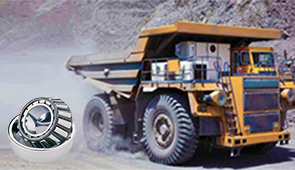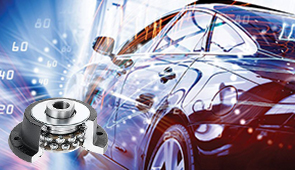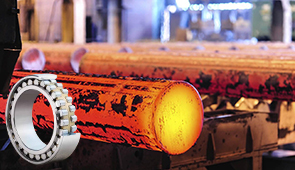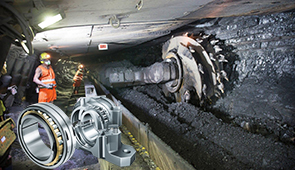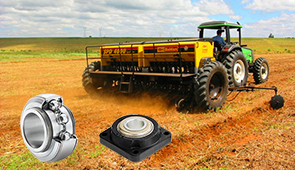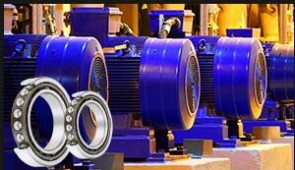Electric Motor Shaft Material: Material Choice for Optimal Motor Performance
Choosing materials for an electric motor shaft can determine its efficiency, strength, and performance. If it needs strength under high stress or better precision for operation, poor material choice will be synonymous with a high frequency of mechanical failures; and proper material choice will mean long-standing reliability. In this article, we dive deep into all the considerations and factors relevant to material selection for electric motor shafts. There are several paramount insights that we will walk you through-from understanding material properties to assigning those properties to the certain requirements of motors. So, let’s explore how making the right choice can lead to improvement in the whole motor set along with its lifespan!
Understanding Electric Motor Shafts
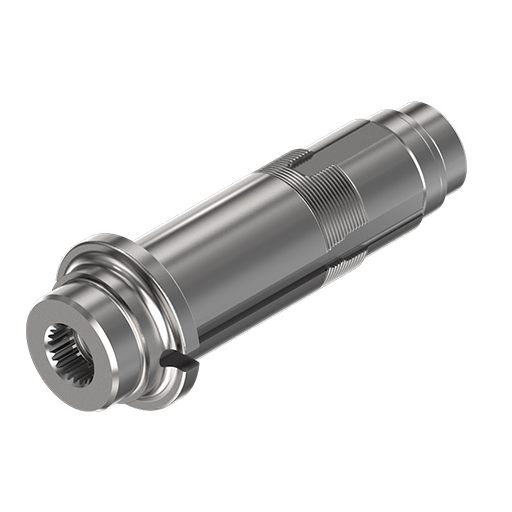
Definition and Function of Motor Shafts
As the main constituent inside an assembly of motors, an electric motor shaft transmits motion, with power being the secondary need, depending on its type. Starting from acting as a conduit for mechanical energy transfer, a motor shaft converts electricity into mechanical energy with the opposite rotation or transfer of torque on attached components such as gears, pulleys, or rotors.
The motor shaft did not remain behind in acting as a power delivery system that ensures efficient and reliable system operations. The motor shaft, therefore, requires the mechanical properties of strength, stiffness, and durability. A good shaft further minimizes vibrations and misalignments so that the motor can work well, even on challenging operational applications.
Material selection, hence, becomes critical to ensure that the shaft smoothly accomplishes its function. Generally, motor shafts are made of steel alloys, stainless steel, or some other very strong material, depending on torque, corrosion resistance, and environmental factors. Hence, if one understands these functions and features, material choices can be directed towards the specific needs of performance electric motor design.
Importance of Material Selection in Electric Motors
Electric motor design requires careful material choices, as these determine efficiency, durability, and performance. By choice of materials, the designer is to ensure that the motor shaft, bearings, and windings resist wear through operational stresses and may perform reliably over time. Improper material selection for the motor may yield energy inefficiency, refurbishment, and, in extreme cases, premature death of the motor.
The motor shaft is chosen depending on the quality of strong and hard materials such as steel alloys or stainless steel because of its high tensile strength and corrosion resistance. Laminations in the motor core often use silicon steel to reduce energy losses by eddy current and hysteresis. The winding, meanwhile, needs materials of high electrical conductivity-performance, mainly copper or aluminum, while considering the cost as well.
The choice of correct materials adds to the motor’s overall life and operational reliability. The engineer must balance such as mechanical strength, thermal resistance, and cost concerns when choosing among any number of materials. It is these selections that, at the end of their lives, best suit the functioning of motors for differing operating environments cost-effectively and sustainably.
Overview of Common Shaft Materials
Shaft materials are very important elements in a motor design, affecting longevity, performance, and efficiency. Most of the materials are selected depending upon their mechanical properties, manufacturing methods used, and their prices. Here are the most common shaft materials for motors:
- Carbon Steel: Carbon steel forms one of the most common materials for motor shafts. It has excellent mechanical properties in conjunction with its low price, therefore rendering it suitable for a wide array of applications. Various grades can offer carbon steel offer different degrees of hardness and resistance to wear. It becomes especially suitable where medium mechanical and thermal stresses are encountered.
- Alloy Steel: Through the addition of elements such as chromium, nickel, or molybdenum, alloy steel depicts strengthened properties as compared to ordinary carbon steel. These impart qualities such as hardness, resistance to corrosion, and toughness to the material, by which it is presented as a suitable consideration for use in applications where precision is involved, such as when high-speed motors are under consideration or severe environmental conditions.
- Stainlessness: Stainless steel is put to use from a resistance to corrosion and durability standpoint. It should be considered for sinks and any application that requires exposure to moisture, chemicals, or temperature extremes. Stainless steel, being more expensive than carbon and alloy steels, must, however, justify its price where rusting or wear is a serious concern.
- Aluminum: Aluminum is light, corrosion-resistant, and easily deformable, and is used for applications where portability or less weight is essential. However, it is not the strongest or most durable, thereby limiting its use in medium- to heavy-duty motors or high-performance motors.
- Composites: In specialty applications, composite materials such as carbon fiber could be the materials of choice. Such a material is lighter and more wear- and corrosion-resistant, yet much more expensive and potentially requiring very fine manufacturing techniques.
In the choice of shaft material, an engineer must analyze the demands imposed by the environment in which the motor will be working against the cost and long-term reliability. Carbon and alloy steels are often used because they are good all-rounders, whereas stainless steel and composites are for the more specialized environments. The right material choice is what leads to the best performance and long life of the motor.
Types of Shaft Materials Used in Electric Motors
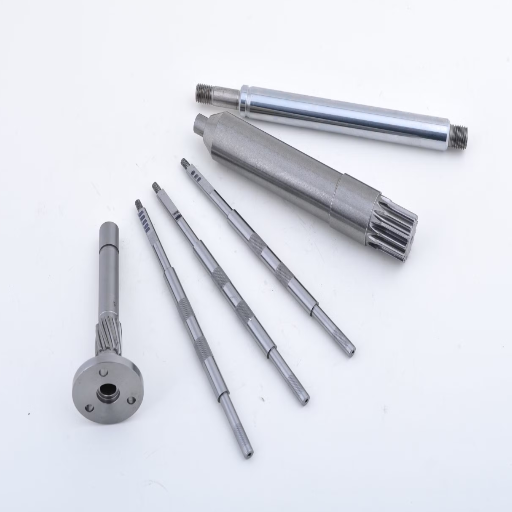
Steel: Strength and Durability
Steel is almost synonymous with something being sturdy and well-built, and this quality is used in bearings for electric motors. The most commonly used types are carbon steels and alloy steels. A carbon steel such as 1045 or 1060 is basically strong in tension and quite economical, and thus generally used in fairly accepted applications. Alloy steels, however, such as 4140 or 4340, will have better mechanical properties, with enhanced toughness and wear resistance, for more demanding use. Hence, the choice between carbon or alloy steel may very much be based on performance requirements and operational environment.
While steel has many advantages, such as high resistance to deformation, excessive loading, and fracture at very high rotational speeds, another of its advantages lies in its ability to undergo heat treatment processes. Through heat treatment, especially quenching and tempering, manufacturers can adjust the hardness, ductility, and resilience of steel to suit specific motor designs. Such a wide range of possibilities allows steel shafts to function reliably across a spectrum of applications, from heavy industrial machinery to EVs.
Despite all these, steel still has some limitations. Corrosion environments, in marine or chemical industries, may require carbon or alloy steels to have some coverings or treatments to work for an extended time. In contrast, stainless steel may be right for this application due to its corrosion resistance. Steel is still, therefore, the industry standard for electric motor shafts, balancing cost versus excellent performance.
Carbon Steel vs. Stainless Steel
Carbon steel offers better strength and price, and stainless steel is for maximum corrosion resistance and aesthetics.
|
Key Point |
Carbon Steel |
Stainless Steel |
|---|---|---|
|
Strength |
High |
Moderate |
|
Corrosion |
Low resistance |
High resistance |
|
Cost |
Economical |
Expensive |
|
Durability |
High |
Moderate |
|
Aesthetics |
Basic |
Polished |
|
Applications |
Structural, tools |
Decorative, medical |
|
Maintenance |
High |
Low |
|
Weight |
Heavier |
Lighter |
Magnetic Materials in Motor Shafts
The significance of magnetic materials in the design of motor shafts stems from their direct bearing on the efficiency and performance of electric motors. The magnetic materials customarily used for motor shafts are silicon steel, nickel alloys, and certain rare earth magnets. Silicon steel is favored for its property of low hysteresis loss, as it reduces energy dissipation in alternating magnetic fields. Conversely, nickel alloys supply a combination of mechanical strength and magnetic permeability, ensuring that the shaft may endure all kinds of mechanical stress and magnetic requirements.
The rare earth magnets, including neodymium-iron-boron (NdFeB) and samarium-cobalt (SmCo), find use in high-performance applications owing to their strong magnetic properties and high energy density. Henceforth, compact and lightweight motor designs can be realized out of such materials, without compromising power output. Henceforth, newer materials are being advertised to redefine the working of magnetic materials that withstand more heat with less eddy current losses, which traditionally plague the design.
On the basis of such considerations as cost, temperature resistance, and application requirements, the selection of magnetic materials for motor shafts must be made wisely in order to maximize performance and sustainability. Further insight into the tradeoffs involved in material selection may come from detailed analyses and simulations encompassing real design scenarios, and such insights may, in turn, supplement the practical design guidelines currently available. Hence, a more energy-efficient and durable modern electric motor could evolve from this search.
Properties of Electric Motor Shaft Materials
Strength and Durability Considerations
The characteristic of great strength is given to motor shafts so that the piece can endure operational stresses and the intervention of time. Motor shafts usually endure very high rotational speeds, high torques, or forces externally applied to them; so, to guarantee tensile strength and fatigue resistance, one must choose materials accordingly. For example, AISI 4140 and AISI 4340 are very common, being considered alloy steels due to their excellent balance of strength and toughness. These materials also hold up well in the work environment under the condition of repeated stress, thus keeping shafts from failing and increasing motor life.
Corrosion resistance is another vital property, as weaknesses can develop with time when a shaft is exposed to environmental conditions, particularly in industrial or marine applications. Surface treatments like nitriding or coating are intended to increase durability and surface hardness, so they improve wear resistance even more. Selecting materials of high thermal stability also ensures that the shaft retains its mechanical properties at elevated operating temperatures, key to motor requirements in demanding applications like aerospace or automotive industries.
With the sophisticated computational tools available and material science advancements, engineers can model such conditions of stress and long-term performance to be as precise as possible for their chosen materials and optimized designs. This means that the motor shaft will not only meet but also exceed the standards that are required for operational efficiency and reliability.
Weight and Thermal Resistance
Weight and thermal resistance are the two essential factors affecting the success and durability of motor shafts. The light motor shaft, in some sense, lowers the weight of the system as a whole, thus giving better energy efficiency and less fuel consumption for transportation applications. Nowadays, advanced materials like carbon fiber composites and high-strength alloys are more commonly used for their lighter weight without sacrificing mechanical strength.
Thermal resistance, on the other hand, is essential for ensuring that the motor shaft can operate reliably under varying thermal loads. High operating temperatures can cause material fatigue, warping, or even failure over time. Materials like titanium alloys and thermally conductive ceramics offer exceptional performance by combining low thermal expansion with high thermal conductivity. Additionally, coatings and surface treatments like thermal barrier coatings are used to enhance heat resistance and prevent degradation under extreme thermal conditions.
Together, the combination of reduced weight and enhanced thermal resistance allows manufacturers to meet the stringent demands of industries like aerospace, automotive, and renewable energy, where efficiency and reliability are vital. The development of these advanced materials and techniques stems from the continuous evolution of research and innovation, ensuring that performance thresholds keep improving to meet future challenges.
Advantages and Limitations of Each Material
- Aluminum Alloys
- Advantages: Aluminum alloys are very light, corrosion-resistant, and offer excellent heat conduction properties. This feature gives these materials a great level of flexibility and economical value, making them widely used across industries such as aerospace and automotive. Plus, their recyclability serves as a huge plus for environmental reasons.
- Limitations: Although lightweight, aluminum alloys seldom have the required strength to stand in for a few heavy-duty applications. They tend to be very fatigue-prone and resistant to wear less than some materials.
- Carbon Fiber Composites
- Advantages: Carbon fiber composite materials offer an extraordinary strength-to-weight ratio and are very rigid. While dealing with mechanical stresses, it performs very well. It is highly resistant to fatigue and corrosion. For these reasons, it finds use in aerospace, sporting goods, and the automotive industries, among other high-performance sectors.
- Limitations: The major limitation of carbon fiber is its high production cost, which remains a hurdle to its mass-market applications. Furthermore, it can turn brittle under certain types of stress, whereas recyclability remains a challenging arena for it.
- Titanium Alloys
- Advantages: Titanium alloys offer a rare combination of strength, durability, and corrosion resistance. They perform exceptionally in extreme temperatures, making them great for aerospace or medical use. They are also highly biocompatible, which is the main reason for their common use in implants.
- Limitations: Since titanium is difficult to process and machine, special equipment and specific knowledge are often required. For certain lightweight constructions, the weight, although less than that of steel, is still greater than aluminum.
- Advanced Ceramics
- Advantages: Advanced ceramics show the traits of being stable under high temperature, hard, and resistant to chemical degradation. They have been put to use from industrial machines to electronic components, as far as their properties of electrical insulation are concerned.
- Disadvantages: These materials are brittle by nature and thus can fail under impact stresses. Moreover, ceramics entail complex and expensive manufacturing and forming processes.
- High-Strength Steels
- Advantages: High-strength steels offer tensile strength at an affordable price. Their most important applications lie in the construction, automotive, and heavy machinery industries, conferring durability and strength.
- Disadvantages: Due to its physical mass, steel could exclude some applications that demand extremely lightweight materials. It is susceptible to corrosion; thus, proper treatments or alloying should be considered.
By leveraging the strengths of these materials while addressing their weaknesses through combined usage and advanced manufacturing techniques, industries can push the bounds of innovation and performance for tomorrow’s technologies.
Manufacturing Processes for Electric Motor Shafts
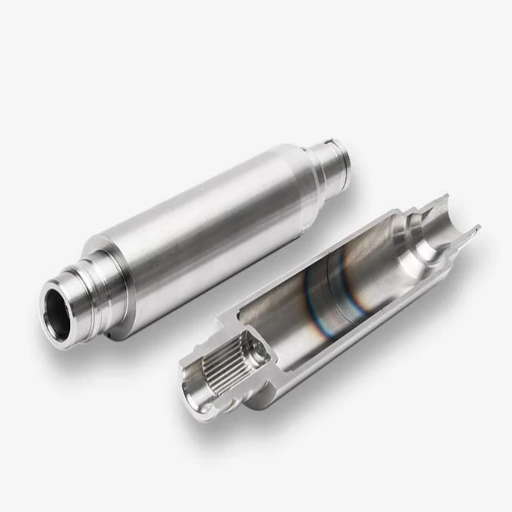
Common Manufacturing Techniques
Usually, the manufacturing of electric motor shafts involves a series of precision manufacturing steps that require precision to ensure durability and performance. One of the most common methods is forging, wherein the stock material is shaped by the application of high pressure and heat so as to obtain a good quality, uniform structure. This method imparts better qualities to the shaft: resistance to fatigue and further resistance to extreme stresses.
Another commonly used method is machining, wherein the raw material is cut, drilled, and ground to the required shape, dimension, and tolerance with very high precision. For finishing and semi-finishing operations, CNC machines are often used to achieve intricate dimensions and tolerances, ensuring the shaft will sit perfectly within the motor assembly.
Casting is another method that may be utilized, especially when dealing with complex designs or when cost efficiency is paramount. The molten substance is poured into molds, allowing shafts to be produced using minimum waste of material and very intricate detailing.
In emerging technologies, additive manufacturing (3D printing) is gathering momentum. While still a bit immature for heavier loads, it allows for highly customized designs with low lead times and, often, a smaller consumption of materials.
This, along with a range of enhancements, addresses the demands of progressive technologies regarding electric motor shafts in terms of quality and performance by mixing modern and traditional manufacturing processes.
Impact of Manufacturing on Material Properties
The shaping process is very important in affecting certain material characteristics of electric motor shafts. For instance, the forging, casting, and machining processes markedly affect the product’s mechanical characteristics like tensile strength, hardness, and fatigue resistance. Forged components are normally well known to be stronger and tougher as the grain structure develops and is refined during the process. However, castings tend to be porous and subject to many defects, but impart ease in fashioning complex shapes under certain design needs.
Additive manufacturing has emerged recently as a complementary method with specific advantages relative to material properties. This method enables layerwise additive construction and also minimizes material wastage in the process of designing precision. Studies have pointed out that advanced post-processing techniques, such as heat treatment and surface finishing, could be employed to improve consistency and performance levels for 3D-printed components. However, even with its recent popularity, some limitations do exist for additive manufacturing processes, especially for producing large and heavily loaded components, where traditional methods still have precedence in reliability.
Surface treatments, although vital to the manufacturing stage, further sculpt the material properties of electric motor shafts. The processes of carburizing, nitriding, and shot peening can increase the surface hardness and create wear resistance in the material, thereby extending its life. The particular factor that dictates electric motor shafts, being constantly subjected to rotation stresses. Material may be optimally tailored by the engineer through the making methods from scratch for particular load conditions encountered in modern electric motor applications, thus creating a balance of durability, enclosed in performance, and efficiency.
Quality Control in Material Selection
Material quality assurance is one of the most important steps in the production process for electric motor parts. It begins with rigorous inspection and testing at material sourcing, analyzing chemical composition, microstructure, and mechanical properties to be sure they conform to stringent industry standards. Deep flaw detection is carried out through NDT methods: X-ray diffraction and ultrasonic testing, which may otherwise cause poor performance under operational stress.
Likewise, stringent quality control procedures take full advantage of real-time data monitoring and automated inspection systems to detect potential deviations earlier in the manufacturing cycle. For example, measurements of surface roughness and hardness tests must be carried out to ascertain, for practically all conceivable degradation modes that components could encounter during their working life. Statistically controlled processes such as Six Sigma are increasingly being deployed to curb variability and secure process consistency.
These steps must be taken to avoid material defects that could precipitate premature failure, reduce the incidence of production waste, and thereby confirm consistency of product quality. The greater the importance assigned to precision, down to the very selection of materials in quality control, the more evident becomes engineering’s commitment to providing the most efficient and long-lasting form of motor.
Practical Applications of Electric Motor Shaft Materials
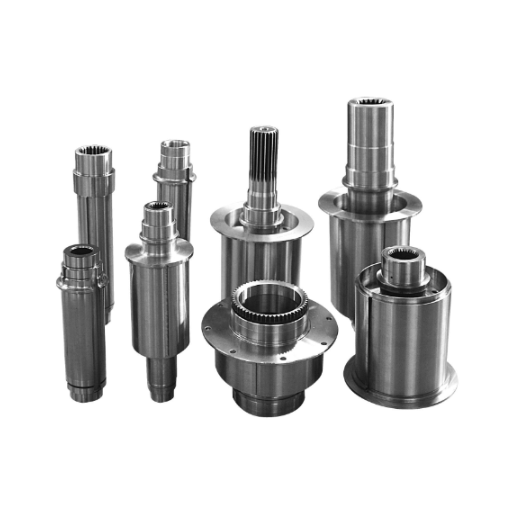
Automotive Electric Motors
To fulfill the ever-increasing demand for energy-efficient and environmentally friendly vehicles, the automotive industry has now turned to electric motors. An electric motor is central to the working of any kind of electric or hybrid vehicle; it converts electric energy into mechanical energy to drive the vehicle. The materials used in the motor shafts are an important feature in the working of these motors. They should be made of materials that ensure durability, efficiency, and proper energy transfer under varying load conditions that a given application might face in real life.
These alloys belong to the class of high-performance steels, such as chromium-molybdenum steel: from the mechanical strength point of view, they must also offer resistance to wear and operate under very high rotation rates. Some developments nowadays might even include using composite materials to reduce the weight of these components, thereby reducing the weight of the motor itself, while still providing structural integrity. Here, the lighter weight greatly aids in the energy efficiency of the electric motors and hence in the range of the vehicle.
Since another paramount concern pertains to thermal performance, the thermophysical properties of motor shaft materials are thus considered. During operations, electric motors generate a lot of heat that has to be conducted away to maintain a stable temperature and avoid overheating. With the implementation of innovative manufacturing techniques and materials science, shafts can now be precision-engineered to meet these challenges. This precision manufacturing ensures the highest level of performance and reliability for electric motors in automotive applications, as such a transition toward an electric and sustainable transportation-compatible future.
Industrial Motor Applications
Industrial motors are used for utility or engineering services, whatever their nature, depending on their efficacy, durability, and adaptability. The following is the list of five major industrial motor applications:
- Manufacturing and Assembly Lines: Industrial motors power the main machinery of production in the lines, such as conveyors, robotic arms, and presses. Motors with high efficiency guarantee that production lines operate consistently with less energy consumption. For example, in state-of-the-art factories, the use of variable frequency drives, or VFDs, with motors is helping streamline operations and save on energy costs by 30%.
- HVAC Systems: Motors are used in heating, ventilation, and air-conditioning systems to operate fans, compressors, and pumps. Using good motors in an advanced HVAC system can reduce energy consumption by 20%, thus promoting sustainability in buildings and industrial complexes.
- Pumping Systems: In fluid transport, industrial motors drive pumps in water treatment plants, oil refineries, and agricultural irrigation. As an example, centrifugal pumps driven by electric motors might achieve flow rates higher than 500 gallons per minute, a fairly large figure for industrial uses.
- Mining and Extractive Industries: Heavy motors are used for mining equipment such as crushers, grinders, and draglines. These motors are designed for hard environments but deliver consistent power output. Mining motors would, for instance, boast torque levels above 100,000 Nm to withstand the mechanical demands.
- Renewable Energy Systems: Industrial motors have found an imperative role in renewable systems, such as wind turbines and solar tracking systems. Wind turbines use motors for adjusting blade angles and for the orientation of nacelles for maximum energy capture. Industry sources indicate that the global capacity of wind energy has crossed above 830 GW, with industrial motors still being at the center of this growth.
Yet, this shows the versatility as well as the critical importance of industrial motors in driving global industries forward. Advances in motor technology maintain and improve efficiency and reliability, thereby making motor technology indispensable in industrial operations.
Consumer Electronics and Their Requirements
In general, reliability, efficiency, and exactitude are very important for consumer electronics. Motor technologies thus have to give supreme performance to perform functions in smartphones, laptops, gaming consoles, and wearable technologies. In enabling these motors for these advanced purposes, motors are installed in applications such as vibration mechanisms and cooling systems, also in aligning cameras with pinpoint precision. Consumers take this very smooth functioning for granted, which in itself becomes a credit for the diligent engineering and innovative craftsmanship behind the industrial motor design.
Compact in size without compromising performance requirements, I would highlight it as the most viable in consumer electronics. As smaller and portable devices are in demand, the manufacturers need to make motor systems that are at least as durable and efficient in this respect. There is a delicate balance in things like smartwatches, where motor haptics consume as little power as possible. I find it fascinating to see how little motors can provide power that directly improves our interaction with technology in daily life.
Finally, energy efficiency in motor design and application in consumer electronics should really matter to me. Consumers increasingly tend to expect fairly long battery life and other eco-friendly experiences from their products. Hence, motor designers try to come up with solutions that reduce power consumption while still riding on the glory of operational longevity. These solutions create not only helpful user experiences but also contribute to the greater sustainability goals of the electronic industry.
Frequently Asked Questions (FAQ)
Q: Which electric motor shaft material is preferred in high-temperature applications?
A: Materials such as stainless steels are considered suitable for higher temperatures, mainly due to their ability not to degrade with heat and loss of strength at higher operating temperatures. Stainless steel has a fairly high degree of toughness; hence, it will be able to sustain the loads of electric motors running in harsher environments.
Q: How does the yield strength relate to the choice of electric motor shaft material?
A: Yield strength is essential in selecting electric motor shaft materials as it is related to the load exerted on the shaft without deforming. Medium carbon steel, being higher in yield strength, is generally selected for conditions involving excessive vibration and high loads.
Q: Why is machinability necessary in the manufacturing of electric motor shafts?
A: Machinability refers to how easily a material can be shaped and finished. For electric motor shafts, materials like cold-rolled medium carbon steel and some stainless steels generally have very good machinability, allowing very precise manufacturing and finer finishes that are necessary for fine motor performance.
Q: Which materials are used for electric motor shafts?
A: Generally used types for electric motor shafts are low carbon steel, medium carbon steel, and various kinds of stainless steel. These materials provide properties such as ductility, corrosion resistance, and strength that suit different applications in shafts.
Q: How do the operating conditions influence the choice of material for an electric motor shaft?
A: Environmental conditions, such as exposure to corrosive atmospheres or heat, will largely determine the choice of electric motor shaft material. For instance, stainless steel is usually used in marine environments due to corrosion resistance, while carbon steel can be chosen where higher hardness and strength are demanded.
Q: How does surface hardening promote the performance of electric motor shafts?
A: Surface hardening works in favor of increasing wear and fatigue resistance of the electric motor shaft, thus offering a healthier life for the shaft under normal usage. It helps a shaft in increasing the ultimate tensile strength and in preventing premature wear as well, thereby ensuring the full performance of the motor.
Q: Can the electromagnetic properties of a motor rotor shaft change due to its design?
A: Depending upon its design, a motor rotor shaft could have some effects on electromagnetic properties. Commonly, cylindrical geometry is provided so that the rotor may efficiently set a magnetic field when electric current is flowing through it. The choice of material thus also contributes to giving the desired electromagnetic efficiency.
Q: What factors are to be considered while designing keyways for electric motor shafts?
A: One has to consider the machinability of the material and its strength when designing the keyways for electric motor shafts. The keyway must be accurately made to ensure that it fits properly and functions to transmit torque effectively without affecting the strength of the shaft.
Q: How does the electric motor shaft material choice affect vibrational levels?
A: The materials chosen for the electric motor shaft can highly impact the vibration levels. For example, a shaft crafted from low-carbon steel may be less able to absorb the vibrations as compared to shafts made from superior materials. Exposure to excessive vibrations results in mechanical failures, so the choice of materials is critical in minimizing such vibrations.
UCTH213-40J-300 with Setscrew(inch)
CNSORDERNO: Normal-duty(2)
TOGN: UCTH213-40J-300
SDI: B-R1/8
SD: 2 1/2
UCTH212-39J-300 with Setscrew(inch)
CNSORDERNO: Normal-duty(2)
TOGN: UCTH212-39J-300
SDI: B-R1/8
SD: 2 7/16
UCTH212-38J-300 with Setscrew(inch)
CNSORDERNO: Normal-duty(2)
TOGN: UCTH212-38J-300
SDI: B-R1/8
SD: 2 3/8
UCTH212-36J-300 with Setscrew(inch)
CNSORDERNO: Normal-duty(2)
TOGN: UCTH212-36J-300
SDI: B-R1/8
SD: 2 1/4
UCTH211-35J-300 with Setscrew(inch)
CNSORDERNO: Normal-duty(2)
TOGN: UCTH211-35J-300
SDI: B-R1/8
SD: 2 3/16
UCTH211-34J-300 with Setscrew(inch)
CNSORDERNO: Normal-duty(2)
TOGN: UCTH211-34J-300
SDI: B-R1/8
SD: 2 1/8









